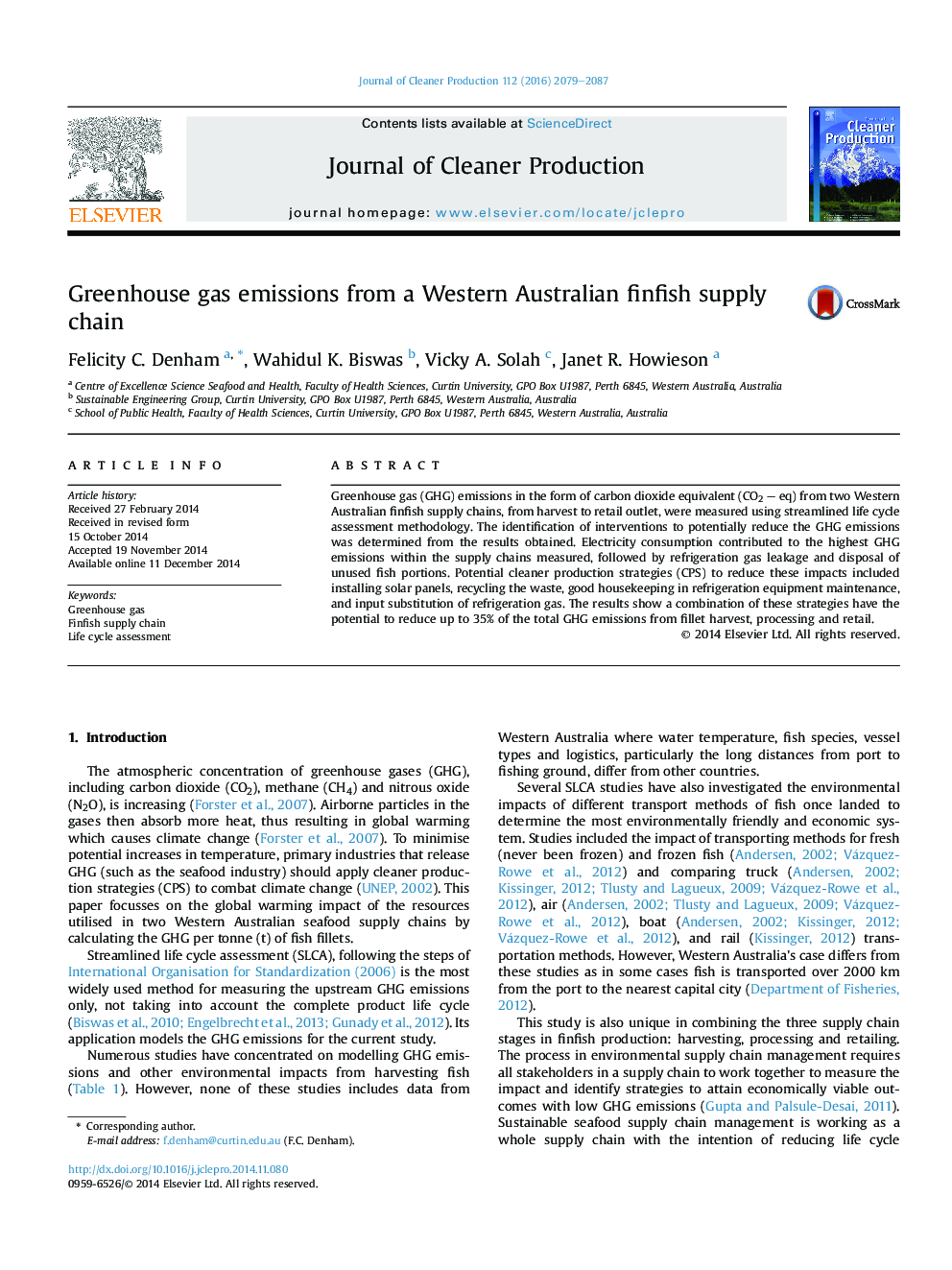| Article ID | Journal | Published Year | Pages | File Type |
|---|---|---|---|---|
| 1744264 | Journal of Cleaner Production | 2016 | 9 Pages |
Greenhouse gas (GHG) emissions in the form of carbon dioxide equivalent (CO2 – eq) from two Western Australian finfish supply chains, from harvest to retail outlet, were measured using streamlined life cycle assessment methodology. The identification of interventions to potentially reduce the GHG emissions was determined from the results obtained. Electricity consumption contributed to the highest GHG emissions within the supply chains measured, followed by refrigeration gas leakage and disposal of unused fish portions. Potential cleaner production strategies (CPS) to reduce these impacts included installing solar panels, recycling the waste, good housekeeping in refrigeration equipment maintenance, and input substitution of refrigeration gas. The results show a combination of these strategies have the potential to reduce up to 35% of the total GHG emissions from fillet harvest, processing and retail.
